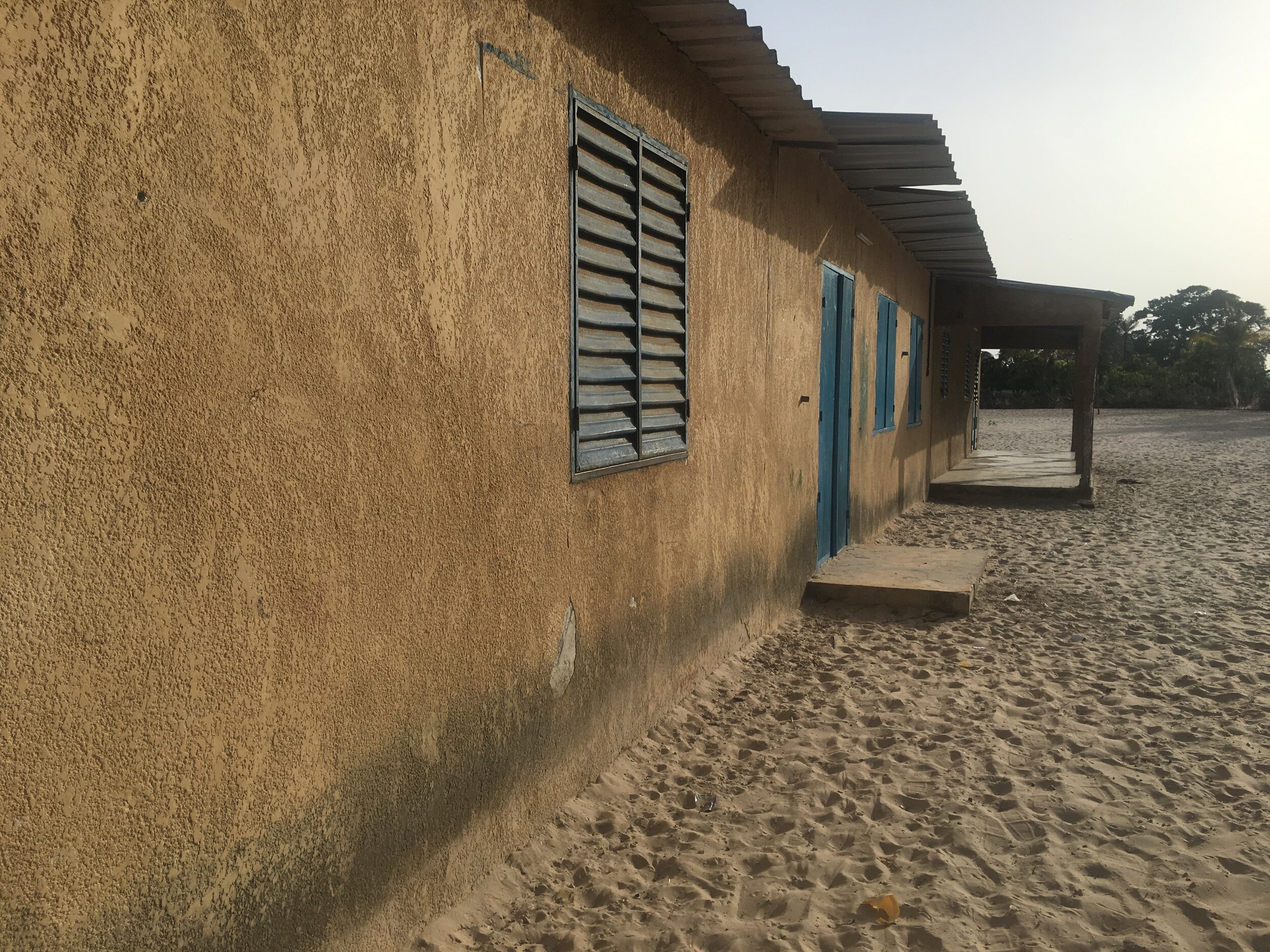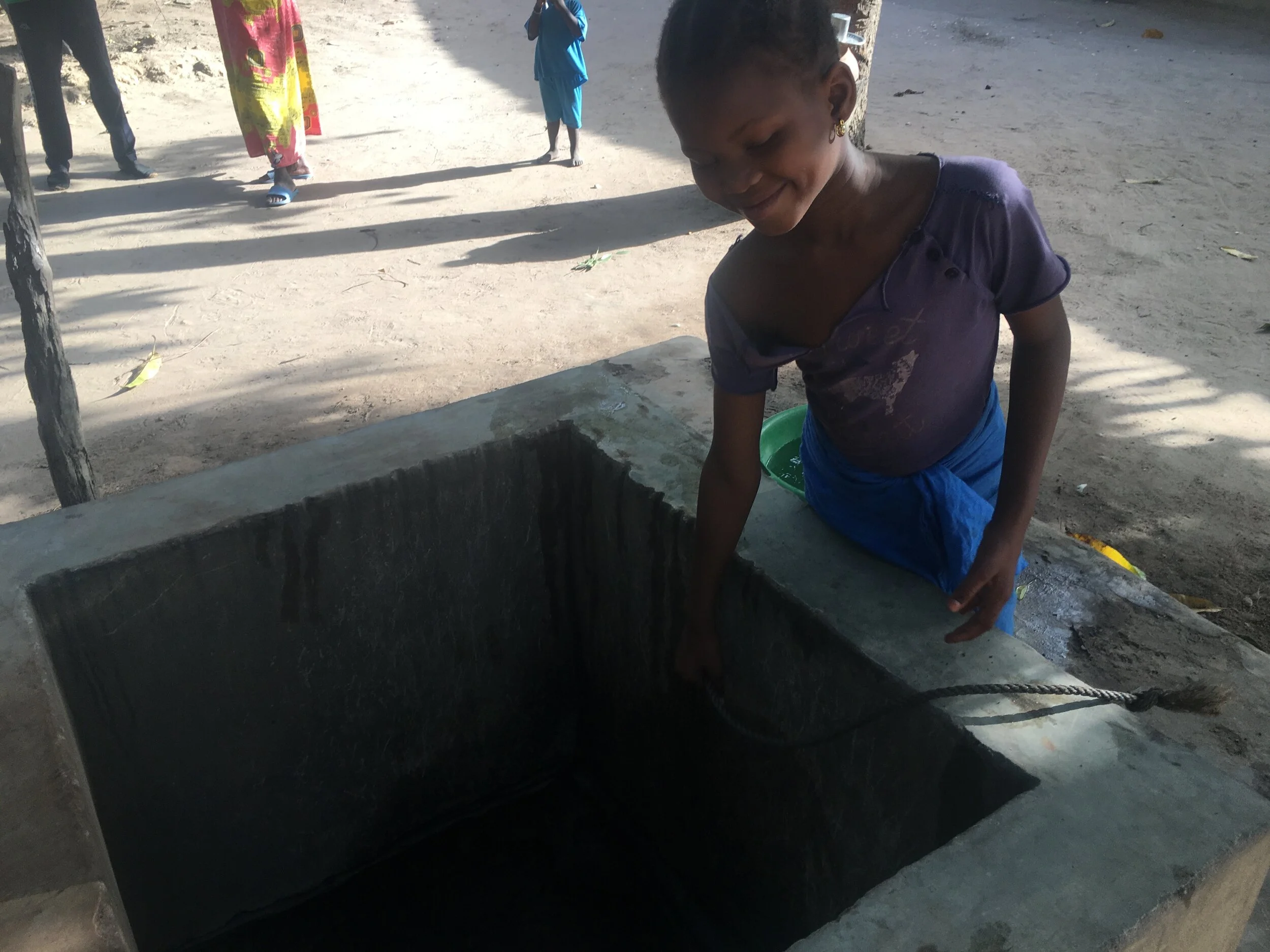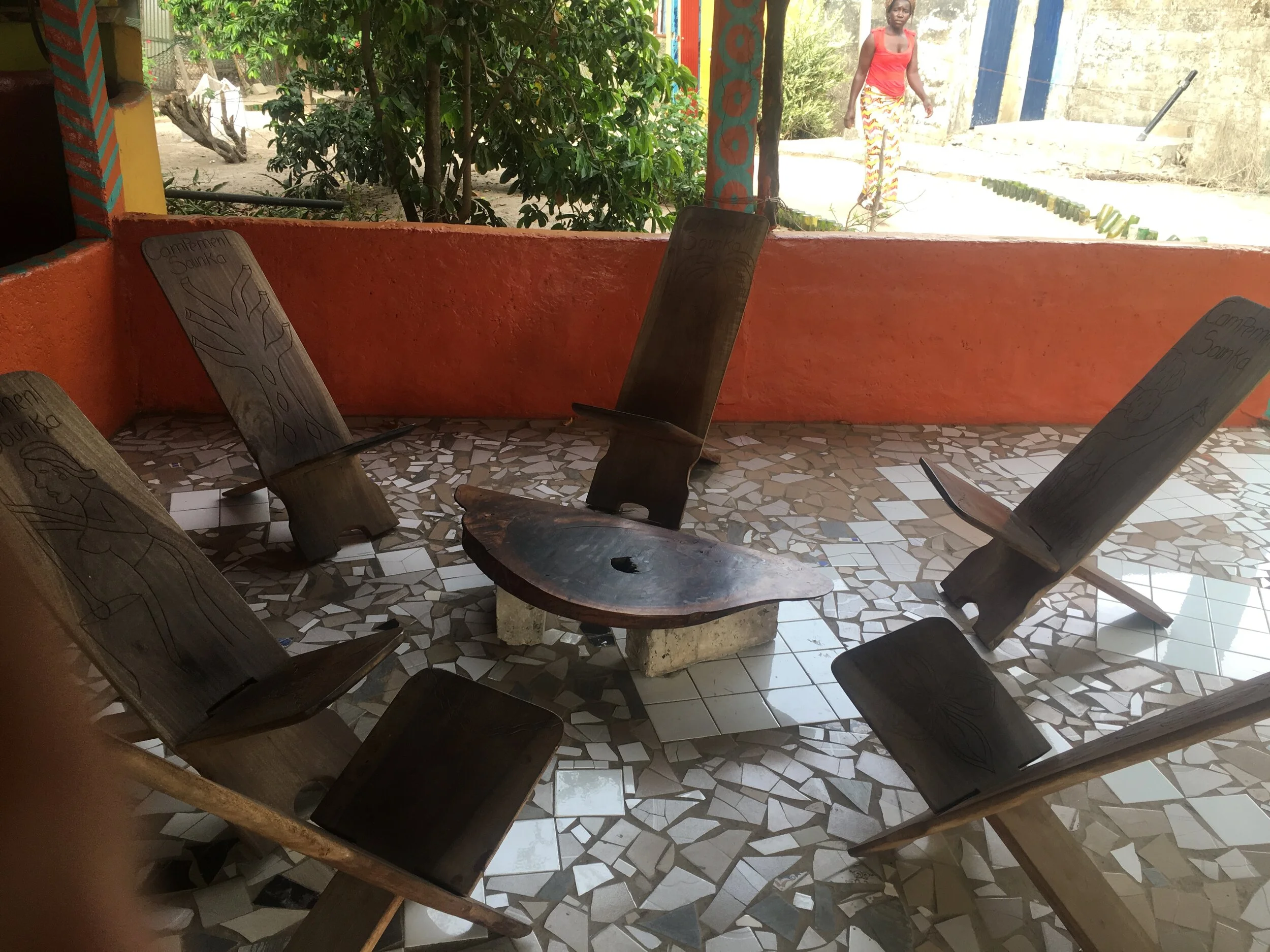Making Petite Jarres
A few days ago Paco dropped off a bag of brioche with a group of boys on the road and told them to take it to their grandmother. He told us we would come back to see her pottery studio and learn about traditional ceramics. When we come back Paco brings soccer cleats for one of the boys. When he’s not guiding Paco runs a schools and summer camp and has a big interest in seeing the kids of Casamance succeed.
Démonde works on her pot as her grandson’s look on.
The potter’s husband is a retired police officer. He tells us he received a pension for the first three months of his retirement but now the government doesn’t give him anything. An adult daughter with intellectual disabilities sits in the corner and laughs. She shakes our hands but she doesn’t speak French. The three young boys huddle around us and spread out a bamboo mat for their grandmother, Megan and I to sit on.
The grandmother explains that she digs up the earth and mixes it with pulverized sea shells to create her clay which is grey and gritty when wet and red when fired. She fires the pottery she makes in a patch of earth just outside the wall to her house. She sets the pots on the ground, builds a fire of palm branches and lets the pots cook in the fire over night. She says we can pick up our creations the following morning.
The patch of earth where Démonde fires her clay pots is just outside the walls of her garden.
We break the gritty clay into tennis ball sized blobs and roll them out on 2”x6” slabs of wood the boys have laid out for us. Her name is Démonde and she speaks French to Megan who translates to English for me. She’s wearing floral print pants, an over sized tee shirt from an even in 2012 and very French-looking hat with a red stripe. She isn’t wearing shoes.
Megan and I with our pots before they’re fired.
The technique she shows us is a spiraled coil pot. There is a reused plastic bucket of slip the same grey color as the clay and a few wooden dishes to be used as a sort of wheel to turn the pots as we smooth the coils inside and out. She is a strict teacher and quick to tell us, “Not like that,” then take the pot from us and fix it herself.
We were supposed to just watch her make a pot but, as an art teacher, I asked Démonde if we could participate and she acquiesced. We rolled the clay into 1” diameter snakes, secured in on the inside of the pot and continued the coils until the earth resembled an orb. She then told us to use small, smooth pieces of wood dipped in slip to smooth the inside and out better than what we had done with our fingers. She slapped the outside of the pots with a slab of wood to perfect the shape before rolling a piece of twine over the outside to make a pattern.
Paco demonstrates a traditional drinking cup and cooling clay container for water.
Inside her workshop, which doubled as a chicken coop filled of tiny cheeping chicks and their mother, were rows of finished clay pots. Small Grecian-esque pots, large water vessels, vases and similar pots to what we made were waiting to go to market.
Once the pots come out of the fire, they are varnished with the juices of a local plant, deep purple in color and watery in texture. It looks like the Bissau jus laucaux we’ve been drinking in the restaurants. Our pots are almost too hot to touch when we come back in the morning to retrieve them. Paco said we’re the first tourists who have participated rather than just watched the pottery demonstration. He said he was proud of us for getting our hands dirty. Americans and Europeans seem to have the reputation in Senegal of not knowing how anything works and not wanting to do any manual labor or walk anywhere. I’m sure it’s a carry-over from Senegal’s colonial past which ended not even 60 years ago.








